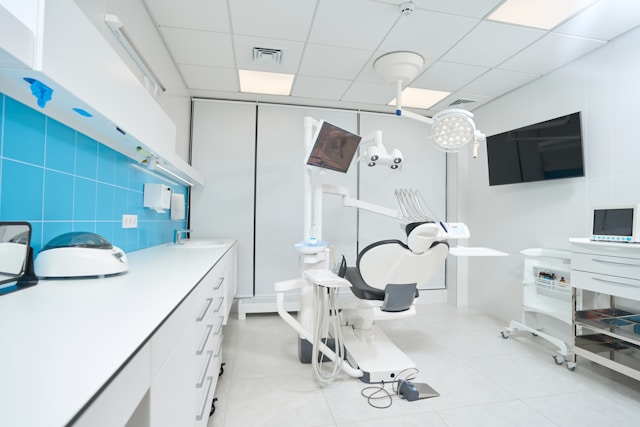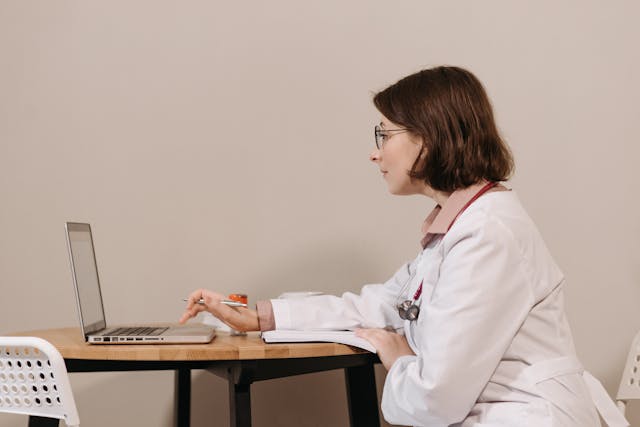Introduction
Nursing workflows are crucial for maintaining high standards of patient care and operational efficiency in healthcare settings. These structured routines help nurses manage various tasks, from patient assessments to discharge planning, ensuring that every aspect of care is handled meticulously.
This article explores common nursing workflows and discusses how they enhance patient outcomes, reduce errors, and prevent staff burnout. By optimizing these workflows, healthcare facilities can significantly improve the effectiveness and satisfaction of their nursing teams. Let’s delve into some typical examples of nursing workflows and understand their importance in the healthcare industry.
Common Nursing Workflow Examples
Nursing workflows are essential protocols that structure nurses' daily activities to ensure consistent and safe patient care. These workflows cover a range of nursing tasks above, from initial assessments to managing medications and discharge planning. Here are some common examples of nursing workflows:
Patient assessment workflow
In a typical patient assessment workflow, nurses collect the patient's vital signs, including temperature, blood pressure, pulse, and respiratory rate. They also review the patient's medical history and current medications. This data collection systematic review is crucial for identifying any immediate health issues or potential complications.
Nurses use various tools and techniques, such as stethoscopes for auscultation and sphygmomanometers for blood pressure measurements. The information gathered is documented in the patient’s electronic health record (EHR) for ongoing monitoring and decision-making.
Medication administration workflow
Medication administration is a critical nursing task that follows a rigorous workflow to ensure patient safety implementation. The process begins with the registered nurse first verifying the patient's identity and cross-referencing the medication order against the patient’s medical record.
Nurses employ the concept analysis of the "five rights" (right patient, right drug, right dose, right route, right time) before administering any medication. This workflow often involves using barcode scanning systems to reduce errors. After administration, the nurse monitors the patient for adverse reactions and documents the medication delivery and any observations in the patient’s EHR.
Wound care management workflow
Wound care management involves regular assessment, cleaning, and dressing of wounds. The nurse first assesses the wound for signs of infection or deterioration. They then clean the wound using appropriate antiseptic solutions and apply a sterile dressing. The type of dressing depends on the wound’s severity and location. Nurses document the wound’s progress and any treatments provided in the patient’s medical record throughout this process. This clinical workflow is crucial for preventing infections and promoting optimal healing.
Discharge planning workflow
Discharge planning is a comprehensive process that begins soon after a patient is admitted to the hospital. Nurses coordinate with doctors, social workers, and other healthcare professionals to create a discharge plan that ensures patient safety and continuity of care.
This plan includes arranging for necessary medications, medical equipment, follow-up appointments, and home and health care services. Nurses educate patients and their families about care at home, potential complications, and when to seek medical attention. The final step involves reviewing and confirming all aspects of the care plan with the patient and their caregivers before discharge.
Importance of efficient nursing workflows
Efficient nursing workflows are vital for ensuring high-quality patient care and safety in an acute care setting and in high-stress environments such as the intensive care unit. These structured protocols enable nurses to manage their tasks methodically, reducing the likelihood of errors and ensuring that critical steps in patient care are not overlooked. By optimizing the use of time and resources, efficient workflows help prevent nurse burnout and job dissatisfaction, which are common in environments where heavy workloads and chaotic processes prevail.
Moreover, streamlined workflows enhance communication among healthcare team members. Clear and consistent communication among the care team ensures that all care providers know a patient's condition and treatment plan, which is crucial for coordinated care and timely interventions. This collaborative environment significantly improves patient outcomes by facilitating quicker responses to patient needs and reducing the duration of hospital stays.
Tips and strategies to improve nursing workflows
Efficient nursing workflows are essential for providing high-quality patient care and ensuring the well-being of healthcare staff. By optimizing these workflows, healthcare facilities can improve patient outcomes, reduce errors, and enhance overall operational efficiency. Below are some practical tips and strategies to improve nursing workflows in a health care environment, including the use of technology solutions, training, and continuous process evaluation.
Implement technology solutions
Integrating technology solutions like electronic health records (EHRs) or management software such as Carepatron can significantly streamline nursing workflows. These systems provide real-time access to patient data, and patient flow initiatives reduce paperwork and minimize errors associated with manual entry. For example, barcode scanning for medication administration ensures accuracy and improves patient safety by adhering to the "five rights" of medication administration.
Regular training and education
Ongoing training and education regarding nursing workloads are crucial for maintaining efficient workflows. Regular workshops and seminars update nursing staff on the latest best practices and technological advancements. Training sessions can also focus on specific workflow improvements, helping nurses manage time better and enhance patient care.
Continuous review and optimization of workflows
Regularly reviewing and updating nursing workflows can significantly improve clinical nursing efficiency and effectiveness. This process involves analyzing current practices, identifying bottlenecks or inefficiencies, and making necessary adjustments. Involving nurses in these reviews encourages team engagement and the sharing of ideas, leading to practical and innovative solutions.
Foster a culture of feedback
Creating a culture where nurses feel comfortable providing feedback about workflows can uncover insights into daily challenges that may not be apparent to management. Regular feedback sessions allow the nursing team and nurses to discuss what is working and what isn’t, offering opportunities to refine processes continuously. This approach improves workflows and boosts morale and job satisfaction among nursing staff.
Work your way with Carepatron
Carepatron is a comprehensive platform that enhances healthcare management by integrating essential features of nursing software. It automates routine tasks such as patient assessments, documentation, and care planning, allowing nurses to focus more on direct patient care. This shift improves care quality, patient safety implementation, and outcomes by reducing the administrative burden on healthcare providers.
Additionally, Carepatron offers robust tools such as practice management software, streamlining appointment scheduling and billing within clinical practice into a single system. This integration reduces the need for multiple programs, minimizes scheduling conflicts, and ensures accurate billing, leading to better-organized practice operations and improved team communication.
With its user-friendly interface and powerful functionalities, Carepatron adapts to various healthcare environments, making it an indispensable tool for optimizing workflows and enhancing care delivery in health systems.
.png)




.webp)

.webp)

.webp)






.jpg)

.jpg)

.jpg)
.jpg)
.jpg)




.jpg)


